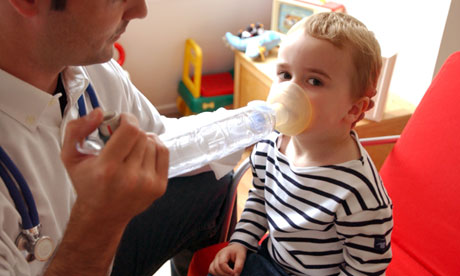
The Daily Mail reported on Monday that children who were given liquid paracetamol for pain relief (in the form of a drink such as Calpol) just once a month were five times as likely to develop asthma as children not given paracetamol. That is a potentially worrying piece of information for parents trying to give their children some respite from the aches and pains of an illness. But the research is far from conclusive.
Asthma rates have been on the increase for several decades and experts around the world are looking for reasons that might explain this trend. Parallel to that, paracetamol has become the most widely used treatment for fever in children. Could these factors be related? They might be. But the new study does not show a causal link.
The latest story is based on a study published online last year in the European Journal of Public Health, in which scientists in Spain examined paracetamol use by more than 20,000 children and teenagers in Galicia. Paracetamol consumption, they concluded, was associated with a significant increase in asthma symptoms and the effect was greater the more often the drug was taken.
"All the asthma symptoms analysed increased significantly with paracetamol consumption," they wrote. "The effects appear stronger in 6- to 7-year-old children, where the taking of paracetamol at least once a month in the last year is associated with a five times more probability of having asthma symptoms, compared with those children who had never taken paracetamol." For teenagers, having paracetamol at least once in the previous year was associated with an increase of 43% in exercise-induced asthma.
The results support several similar studies that have found an association between paracetamol consumption in children and teenagers and the symptoms of asthma.
In 2009, scientists at the Vancouver Coastal Health Research Institute in Canada carried out a meta-analysis of existing research and found an increased risk of asthma when children and adults took paracetamol. In 2010, researchers at Imperial College London reported a study involving more than 11,000 children, which found that taking paracetamol in the first six months of life was associated with a higher prevalence of asthma and wheezing.
Also in 2010, scientists in New Zealand found that using paracetamol before the age of 15 months was associated with a higher risk of children being predisposed to allergies at the age of six.
The New Zealand study was covered widely by the press and, in response, the NHS Choices website issued an explainer on the potential links between paracetamol and childhood asthma. "Parents should not be concerned by this research or assume that paracetamol-based medicines may give their children asthma," they concluded.
"This [NZ] study has only found associations between paracetamol and asthma symptoms in a cross-sectional analysis, meaning that it has not established any cause-and-effect relationship between the two. As it stands, it may be the case that children with symptoms such as wheezing, a potential sign of asthma, were given paracetamol due to their existing symptoms. The study has a number of further limitations that mean its results need further verification, ideally through good quality clinical research."
That message should not substantively change in light of the latest research from Spain. This was also a cross-sectional study and the authors themselves were cautious not to over-claim in their paper. "Our study has some limitations," they wrote. "On one hand, on being a cross-sectional study, a causal relationship cannot be established. On the other hand, the possibility of 'inverse causality' must be considered."
Put simply, it might be that children with asthma are more likely to pick up coughs and colds that require painkillers. However, the researchers add that, "this [reverse causality] should not influence the prevalence of eczema, which was also increased in children who took more paracetamol."
Another limitation of the study is that it required parents to remember the frequency of paracetamol use months or years in the past.
The government body responsible for regulating the use of pharmaceuticals in the UK is the Medicines and Healthcare products Regulatory Agency (MHRA). In light of the Spanish study, a spokesman said: "The safety of paracetamol, as for all medicines, is kept under review by the MHRA. We are aware of the reported possible association between paracetamol and asthma symptoms in children and have been carefully reviewing data on this issue as it emerges. The MHRA, with advice from our independent advisory committees, will carefully consider the findings in this latest study to determine what, if any, regulatory action is needed."

